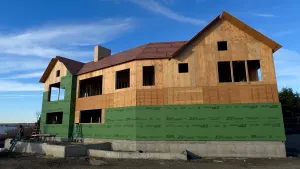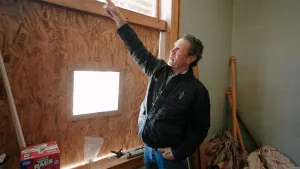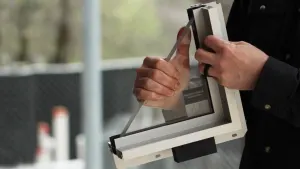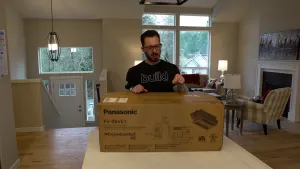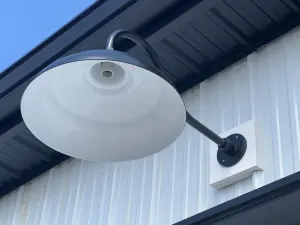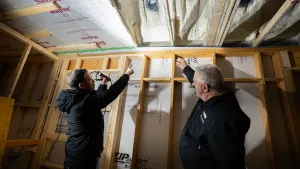We have had unprecedented rains in Texas this Spring and the flooding as a result has been horrible. I did a story on my Time Warner News Austin show Your Home on this topic and we filmed at the epicenter of the Austin Flooding from last week. The pictures to follow are all from Whole Earth Provision Co on Lamar Blvd downtown Austin. This is a locally owned business and I know the owners. Terrific people. Please support their other stores as they endeavor to get this store cleaned up!

If you get flooded out, just remember the Three D’s of Flood Cleanup.
Demo, Dry, & Disinfect
#1 Demo:
Once the waters recede the first step to cleanup is Demolition. Building materials like Sheetrock, Insulation, and Carpet pad all need to get pitched. These are absorbent materials that are generally “low cost” and need to be torn out. You’ll want to look for the flood line on the walls and demo everything from 1′ above that line to the floor. Studs & structure will have soaked up water too but these can be dried without losing structural integrity. Do the demo as quickly as possible as mold & mildew start to be active after about 72 hours post flooding. Wiring is usually able to be saved, but bring in a licensed Electrician to verify. Plumbing pipes are OK too. If HVAC Duct work has been flooded it most likely needs to be removed. You want to demo back to dry & hard surfaces to get ready for step #2.






#2 Dry
Once you’ve demo’d out all the absorbent materials it’s time to bring in the fans and dehumidifiers. Carpet Dryer fans are best for this because the move a lot of air right along the floor line. They can dry a soaked carpet pretty fast if you had a “clean” flood and are salvaging the carpet. Dehumidifiers are key to drying as a fan won’t do much good if the humidity is high. Commercial grade equipment is pricey to buy unless you are a contractor who can use it in the future. I use a ton of this equipment in my remodel/new construction company and I like Quest equipment. You can also rent these from a local construction equipment rental house, or you can call a restoration contractor. They own these and rent to their clients. Remember to check the moisture content of your framing lumber to know if it’s “Dry enough”. You want to get the framing below 20% and ideally below 17% before moving on with the rebuilding efforts. (wood is considered saturated at 30% moisture content and mold will grow when wood is consistently above 20% MC)



#3 Disinfect
This area is the one that gets people spooked the most. Take a deep breath. Mold and mildew have been with us since the start of time. Mold is all around us in the air and is no more harmful than than the black stuff on the grout in your shower. Remember however that there is a certain number of people that are more affected: Mold Allergies, People with Asthma, and certainly anyone who has a compromised Immune System.
You want to do the demo/dry phase as quickly as possible as mold starts to grow if conditions are right after about 72 hours. Mold generally likes warm/moist areas and will grown on any “food” that contains wood sugars. The back of drywall, studs, and another wood based materials are good places for mold to grow. Do a good job on the demo/dry and this last step is least important in my experience. If you fall into the allergen/Asthama/Compromised Immune category then you would want to disinfect all the hard surfaces in your flood zone with a mildewcide like Microban. My common sense advice on this is use your nose as a guide. If you can get it smelling OK inside then you don’t need this last step. If it smells bad (read “musty”) after a solid week+ of drying then you would use a Disinfectant. Remember that mold needs moisture to grow and if your house stays dry then it won’t return.

For more reading on this topic see my Journal of Light Construction article “Drying Wet Framing“, or my blog post on that topic http://mattrisinger.com/drying-wet-framing-lumber/
I wish you the best in your re-build. It seems daunting, but it can be done! Don’t lose hope, pray, and ask for help!
Best,
Matt Risinger
Risinger Homes in Austin, TX

 Share on facebook
Share on facebook Tweet
Tweet Email
Email Share on Linkedin
Share on Linkedin




